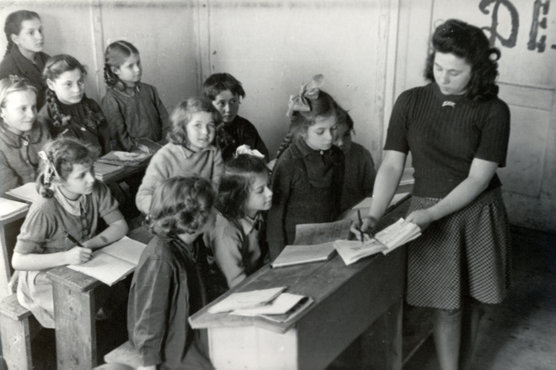Time to Learn
“Never have I seen boys and girls with such spirit, such will to learn.” (Dr. Joseph Schwartz, JDC Annual Report, 1946). Many child survivors had no schooling for years, and could not read or write. Camp residents saw education as the best way to provide for their children’s future. JDC did everything it could to foster this goal. By 1947, there were 13,000 Jewish children attending JDC-supported kindergartens, elementary, and secondary schools.
the first flood – a place to go
The first camp schools in Germany and Austria were established by the Central Committee (representatives elected by camp residents) within months of liberation. Initially, camp teachers and pupils faced great challenges. Most instruction by teachers was based on memory, or from the one or two textbooks available.


An Ancient Language for a New World
Children in one class often came from different countries and cultures. Whenever possible, Hebrew was the language of instruction. Yiddish was used for general subjects, and in classes where students did not yet know Hebrew.



Emphasis on Learning
To address the growing need for skilled teachers from kindergarten through secondary school, JDC funded training programs for camp residents taught by instructors brought in from Palestine by the Jewish Agency. In addition to a broad curriculum, emphasis was placed on moral values and the individual’s obligations towards the community.


Joint Effort
JDC collaborated with the Central Committee of Liberated Jews and the Jewish Agency to create a strong education system. In March 1947, a joint committee of seven representatives was formed. By June, JDC had distributed 150,000 textbooks and readers.






